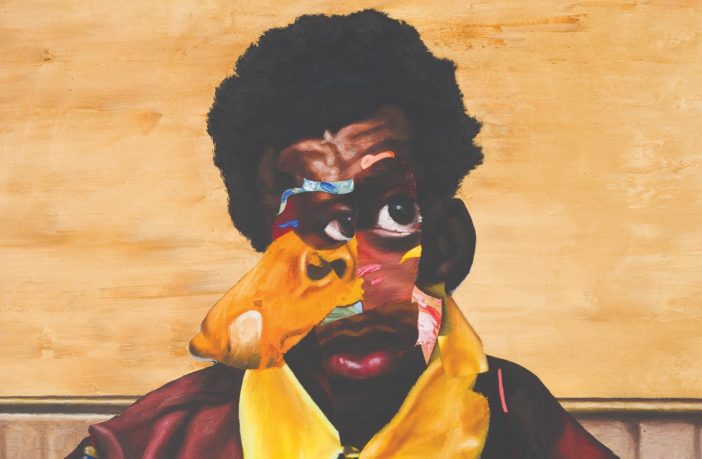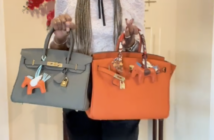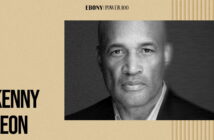Listening to Nathaniel Mary Quinn speak makes me cry. Just thinking of the tragic, early death of Jean-Michel Basquiat—at only 27 years old—makes me cry. I have tears of joy knowing my beloved hip-hop has turned fifty years old. I have been a hip-hop journalist and curator of the very first exhibit on the history of hip-hop in America, with the Rock & Roll Hall of Fame. Through it all, I have done my best, as James Baldwin often said, to be a witness.
Nathaniel Mary Quinn in his studio, 2019. Photo by Jeff McLane. Courtesy of the artist and Gagosian.
Nathaniel Mary Quinn is a witness, too, as one of the most talented and valuable painters we have on the planet today. Like me and many of us who created hip-hop in the first place, he is a survivor of poverty, of trauma, of abandonment, of making something out of nothing. And here he is, a visual artist in the rarest of air, collected by or friends with A-list celebrities like Jay-Z, Leonardo DiCaprio, and Kevin Hart, and the first Black painter since Basquiat to be represented by Gagosian, the premier gallery of the global art world.
Nathaniel’s story is our story, our history, and he should be heard as he waxes poetic on what connects hip-hop, Basquiat, and the child he once was and the man he has become.
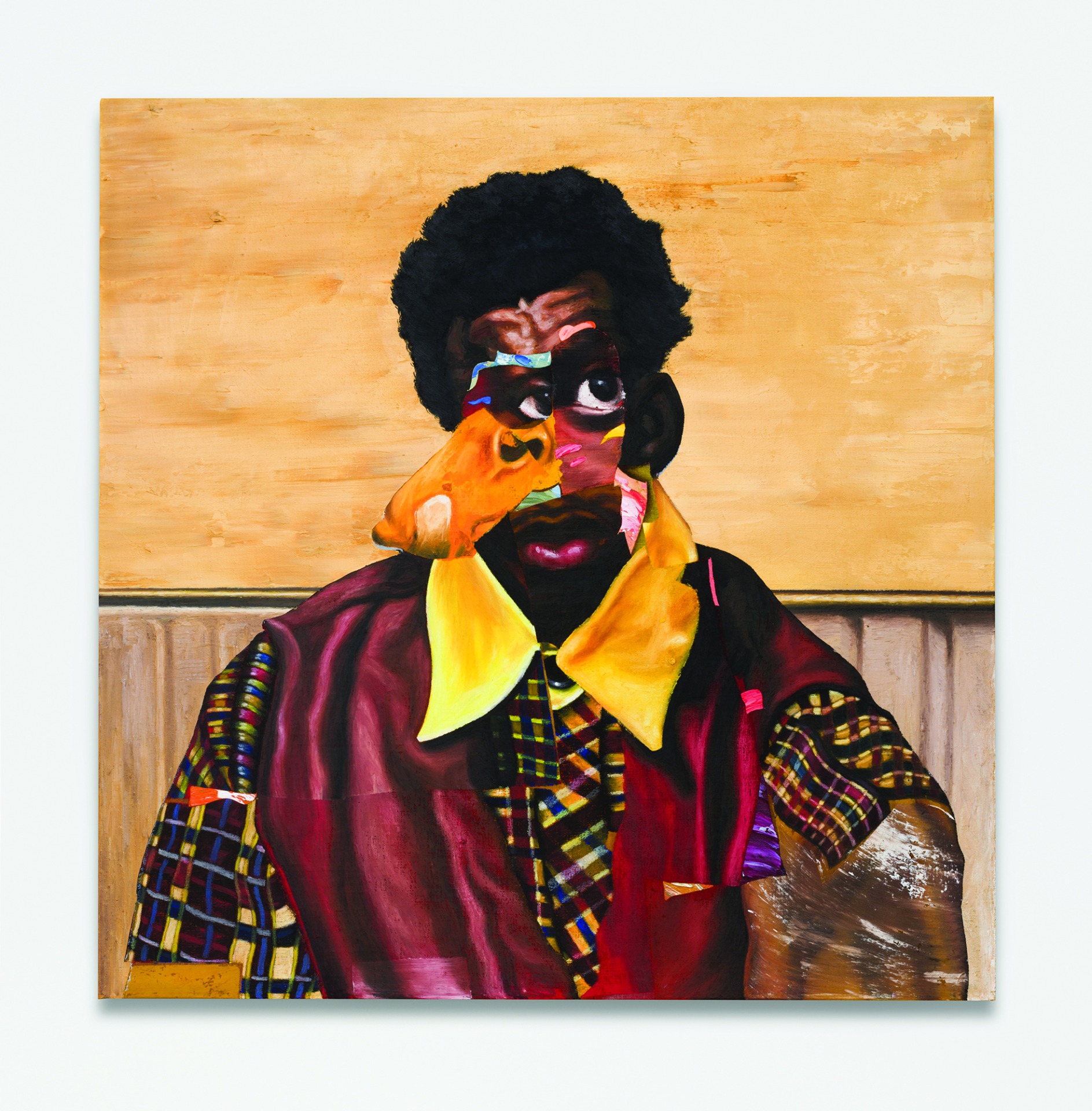
Nathaniel Mary Quinn, Duckworth, 2018. Photo by Jeff McLane. Courtesy of Nathanial Mary Quinn and Gagosian.
Nathaniel Mary Quinn: I watched a car commercial recently that used a Ludacris song to sell a product that has nothing to do with hip-hop itself to the casual viewer. All backgrounds can relate to hip-hop. I look at hip-hop in the same way I think of financial literacy. I would say most Black Americans did not grow up in a home where financial literacy was taught. I mean hip-hop is at the bedrock of our origins as Black folk so it stands to reason that most white people don’t have hip-hop literacy. I don’t know how to rap, but I do have an intimate relationship with the DNA and tapestry of hip-hop. I don’t need to know how to rap. It’s just part of my existence as a Black American in American culture, something that is effectively ours. It’s fifty years old. It constantly evolves. It’s like water; no matter the shape of the glass, it’s still water.
Kevin Powell: Before I go back to your roots, who are some of the major hip-hop influencers and artists who collect your art?
Jay-Z. Carmelo Anthony. Michael Ealy. Leonardo DiCaprio. This is a white man who lives in New York, and he’s a super hip-hop guy. That goes to my earlier point about hip-hop’s ability to permeate backgrounds and viewpoints. You can go to a Ku Klux Klan meeting and hear Tupac in the background.
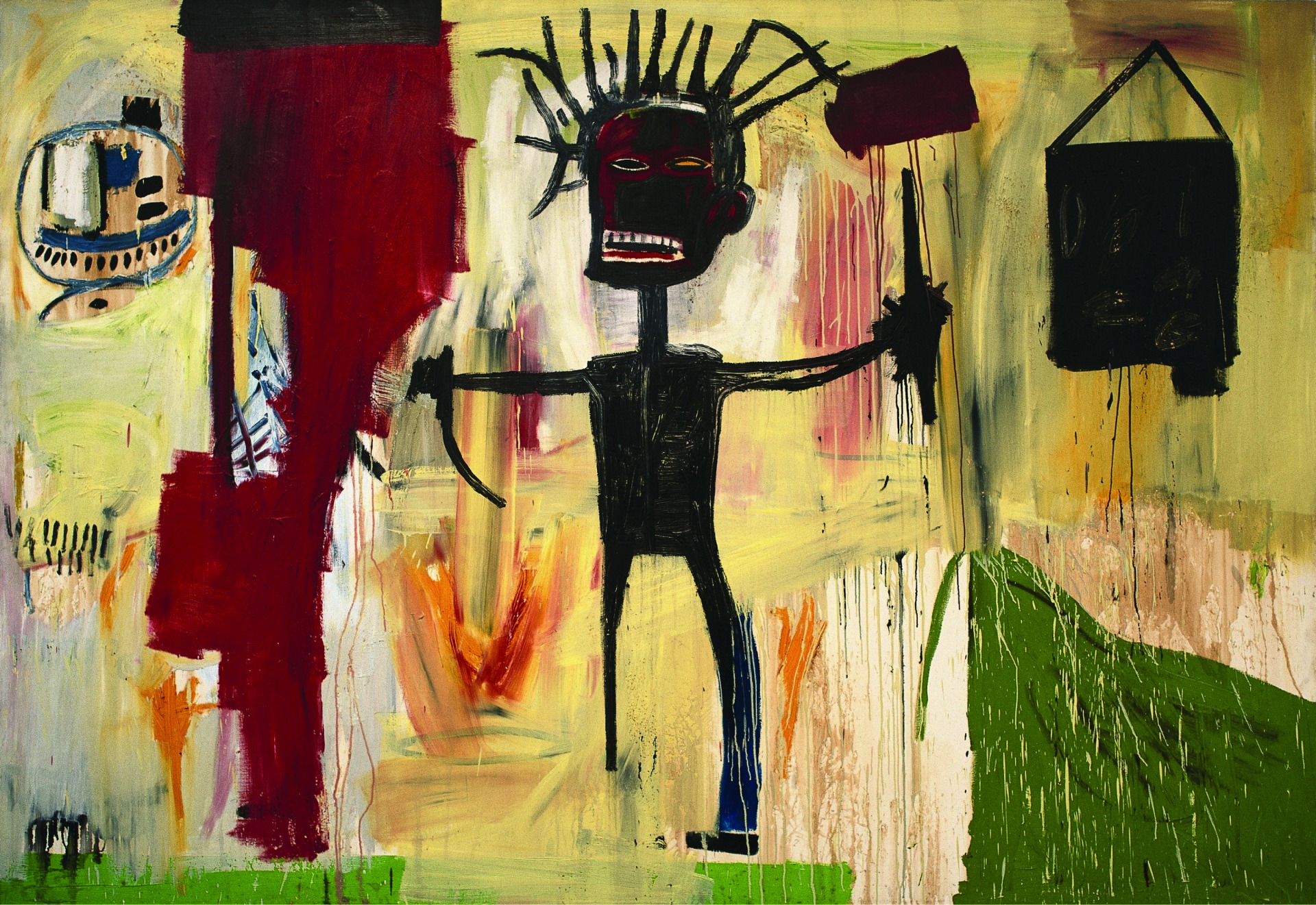 Basquiat, Self Portrait, 1986. Museum of Contemporary Art of Barcelona. Everette Collection.
Basquiat, Self Portrait, 1986. Museum of Contemporary Art of Barcelona. Everette Collection.
You have parallels with Basquiat. Hip-hop. Same art dealer. You have the same kind of audience. You are in this very rare air as a painter.
It’s quite surreal. When I joined Gagosian, I had lunch with Larry Gagosian, who tells me the story of Basquiat staying in LA at Larry’s home, and Basquiat says, “Hey, man, my girlfriend wants to come and stay for the summer. Okay?” The girl comes to Larry’s home: It was Madonna, before she became Madonna. Larry shares these stories with me. I am very honored to be in a seat. I am different from Basquiat. He was in traditional neo-Expressionism. Almost binary, he presented the left and the right, poverty versus rich. Difference in class structures. He attacked systems of racism in America. He was as forceful in the application of materials on his canvas as he was with his commentary on canvas. He pulled no punches. This is also a mirror reflection of what was going on in the Lower East Side in the late ’70s and ’80s—moments of the boiling pot of what will be the real birth of hip-hop. It’s not just about the works made but it’s about the historical time in which the works are made.
Do me a favor, in the same way you just broke down Basquiat, what would he say about Nathaniel Mary Quinn’s paintings?
Basquiat would deem me a very radical painter. He would talk a lot about my courage to be free and liberating with my materials. He would comment on my refusal to succumb to or be swept away into the power systems. He would make note that I’m courageous enough to work in my own lane.
Watch the full conversation between Kevin Powell and Nathaniel Mary Quinn below.
Pick up the Fall 2023 Hip-Hop 50 commemorative print edition of EBONY Magazine in partnership with Mass Appeal at magazines.com, Barnes & Noble, Walmart, Walgreens, Target, Publix, Safeway, Kroger, Books A Million, and more, plus select retailers in London and South Africa on September 19th.
